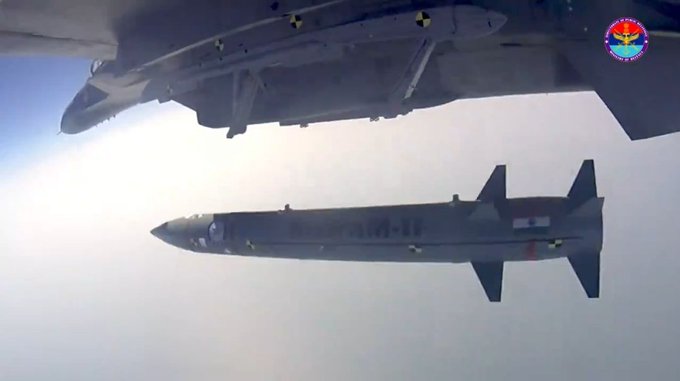SOURCE: AFI


Israel’s recent use of air-launched ballistic missiles (ALBMs) in an attack on Iran has underscored the potential of ALBMs as game-changing assets in modern warfare. ALBMs combine the advantages of air mobility and ballistic trajectory, making them difficult to detect, track, and intercept. With Israel’s success showcasing the strategic edge of ALBMs, India must accelerate its investment in these systems to bolster its own aerial firepower. Although India has made significant progress by procuring RAMPAGE missiles from Israel and developing its indigenous Rudram series, there is a clear need for a larger arsenal of domestically produced, long-range ALBMs to maintain a credible deterrence and response capability.
In Israel’s case, ALBMs enabled the country to strike critical infrastructure with speed and precision while minimizing the risk of retaliation due to the difficulty of intercepting such missiles. For India, these characteristics are crucial given the complexity of its security environment, especially with potential threats from both Pakistan and China.
India has already made strides in air-launched precision weaponry. Notably, the RAMPAGE missile, a supersonic air-launched missile developed in collaboration with Israel, has provided India with a platform for high-precision strikes against hardened targets, such as bunkers and command centers. However, RAMPAGE is limited in range and speed compared to traditional ballistic missiles and falls short of being classified as a full ALBM.
Rudram-II and Rudram-III Designed as anti-ship and air-to-surface missiles, these variants bring a blend of speed, range, and precision that approach ALBM characteristics. Rudram-III, in particular, is a hypersonic missile designed for strategic deterrence.
Rudram-IV that is Currently in development, this version is expected to be a true air-launched ballistic missile, optimized for extended range and high-impact delivery on heavily fortified targets.
India’s security challenges demand rapid, credible responses. With ALBMs, Indian forces could conduct strikes on critical targets in distant, well-fortified regions without escalating to larger, less flexible missile systems. For example, ALBMs allow for greater tactical versatility, as they can quickly be loaded onto various fighter jets or bombers for rapid deployment.
The mobility afforded by air-launch platforms ensures that ALBMs are not bound to static launch sites, which are more vulnerable to preemptive strikes. ALBMs also offer survivability through flexible launch locations, allowing them to evade detection before launch. By leveraging its airpower, India could maintain ALBM capability across a broad area, making its deterrence more credible and less vulnerable to enemy strikes.
ALBMs can serve as a potent non-nuclear deterrent, bridging the gap between conventional missiles and nuclear-tipped ballistic missiles. By developing long-range ALBMs, India can hold high-value enemy assets at risk without resorting to nuclear escalation. This capability is particularly useful in border conflicts where high-value tactical strikes are necessary but don’t justify a nuclear response.
With many countries now seeking advanced weapons systems as a deterrent without needing nuclear options, Indian-made ALBMs could become valuable export products, strengthening India’s defense trade position. India’s recent efforts to export defense equipment, including the BrahMos missile, have been well-received, showing an appetite for Indian missile technology.
Building on the RudraM ALBM Program
Extending the range of ALBMs, such as the Rudram series, would allow them to strike deeper into enemy territory with heavier payloads, ensuring a broader spectrum of targets can be hit from safe distances. Incorporating precision guidance technology will be essential for ALBMs intended for use against high-value, heavily defended targets. This could include satellite guidance and AI-driven pathfinding for maximum impact.
The Rudram-III and the planned Rudram-IV are expected to incorporate hypersonic capabilities, which would make India one of the few nations with the ability to deploy such high-speed weaponry. Hypersonic ALBMs are virtually impossible to intercept, making them a crucial addition to any nation’s arsenal.
To maximize flexibility, India should invest in upgrading its fighter and bomber fleets to carry heavier ALBM payloads. Integrating ALBM capability with the Su-30MKI and potentially the upcoming AMCA (Advanced Medium Combat Aircraft) would provide India with a robust launch platform for future ALBMs.
Israel’s demonstration of ALBMs in action has provided a blueprint for how these weapons can reshape the battlefield and deterrence paradigms. For India, the message is clear: a robust ALBM program is not merely an option but a strategic imperative. By building an arsenal of long-range, precision-guided ALBMs, India can strengthen its tactical flexibility, enhance deterrence, and assert its aerial dominance.